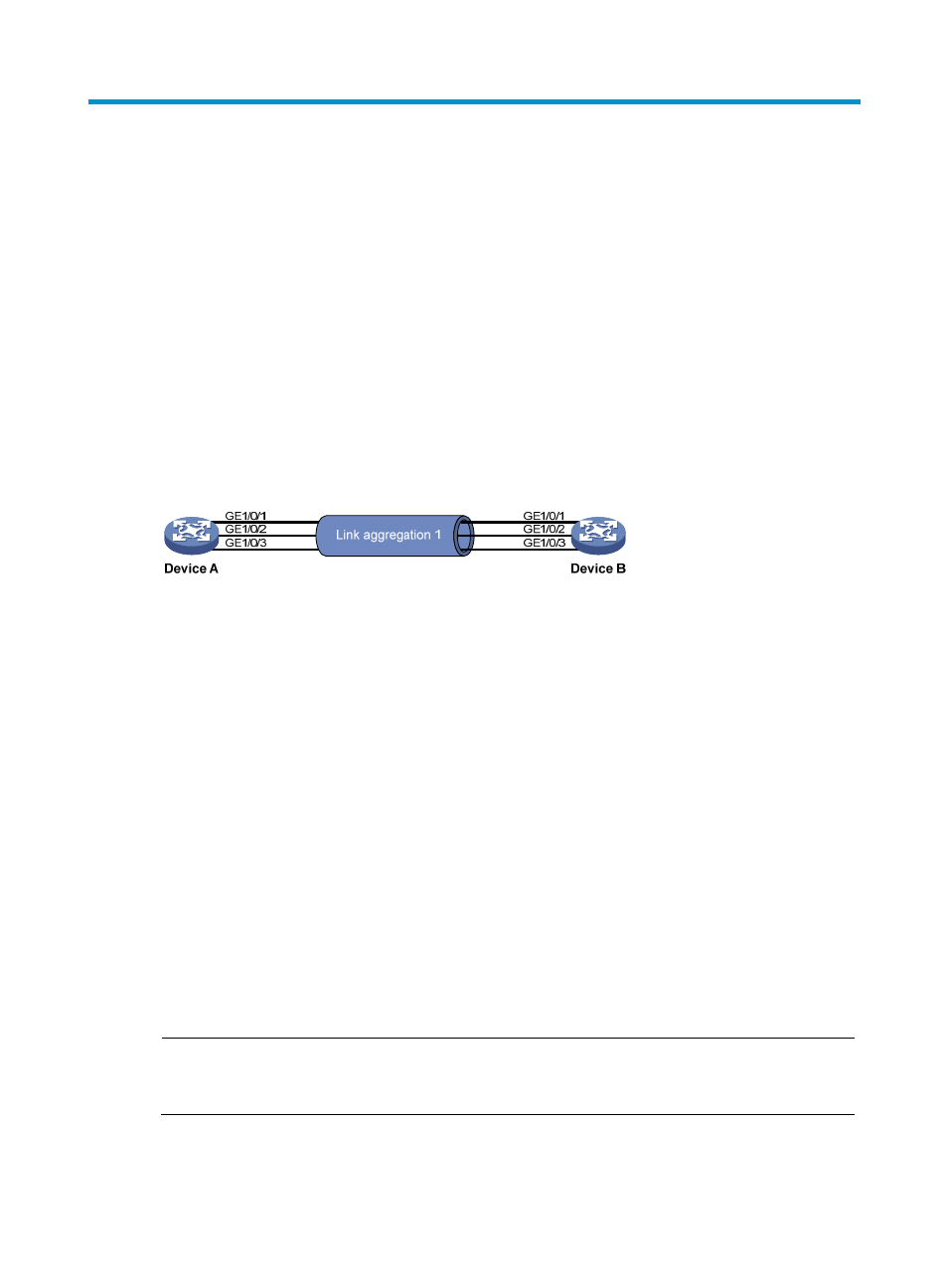Configuring ethernet link aggregation, Basic concepts – H3C Technologies H3C S5560 Series Switches User Manual
Page 56

22
Configuring Ethernet link aggregation
Ethernet link aggregation bundles multiple physical Ethernet links into one logical link, called an
aggregate link. Link aggregation has the following benefits:
•
Increased bandwidth beyond the limits of any single link. In an aggregate link, traffic is distributed
across the member ports.
•
Improved link reliability. The member ports dynamically back up one another. When a member
port fails, its traffic is automatically switched to other member ports.
As shown in
, Device A and Device B are connected by three physical Ethernet links. These
physical Ethernet links are combined into an aggregate link called link aggregation 1. The bandwidth of
this aggregate link can reach up to the total bandwidth of the three physical Ethernet links. At the same
time, the three Ethernet links back up one another. When a physical Ethernet link fails, the traffic
previously carried on the failed link is switched to the other two links.
Figure 8 Ethernet link aggregation diagram
Basic concepts
Aggregation group, member port, and aggregate interface
Link bundling is implemented through interface bundling. An aggregation group is a group of Ethernet
interfaces bundled together, which are called member ports of the aggregation group. For each
aggregation group, a logical interface (called an aggregate interface), is created. When an upper layer
entity uses the link aggregation service, the following events occur:
•
A link aggregation group appears the same as a single logical link.
•
An aggregate interface transmits data traffic.
When you create an aggregate interface, the device automatically creates an aggregation group of the
same type and number as the aggregate interface. For example, when you create aggregate interface
1, aggregation group 1 is created.
Aggregate interfaces include Layer 2 aggregate interfaces and Layer 3 aggregate interfaces.
You can assign Layer 2 Ethernet interfaces only to a Layer 2 aggregation group, and Layer 3 Ethernet
interfaces only to a Layer 3 aggregation group.
NOTE:
You can use the port link-mode command to configure an Ethernet port as a Layer 2 or Layer 3 interface
(see "Configuring Ethernet interfaces").
- H3C S5130 Series Switches H3C S5120 Series Switches H3C SR8800 H3C SR6600-X H3C SR6600 H3C MSR 5600 H3C MSR 50 H3C MSR 3600 H3C MSR 30 H3C MSR 2600 H3C MSR 20-2X[40] H3C MSR 20-1X H3C MSR 930 H3C MSR 900 H3C WX6000 Series Access Controllers H3C WX5000 Series Access Controllers H3C WX3000 Series Unified Switches H3C LSWM1WCM10 Access Controller Module H3C LSWM1WCM20 Access Controller Module H3C LSQM1WCMB0 Access Controller Module H3C LSRM1WCM2A1 Access Controller Module H3C LSBM1WCM2A0 Access Controller Module
